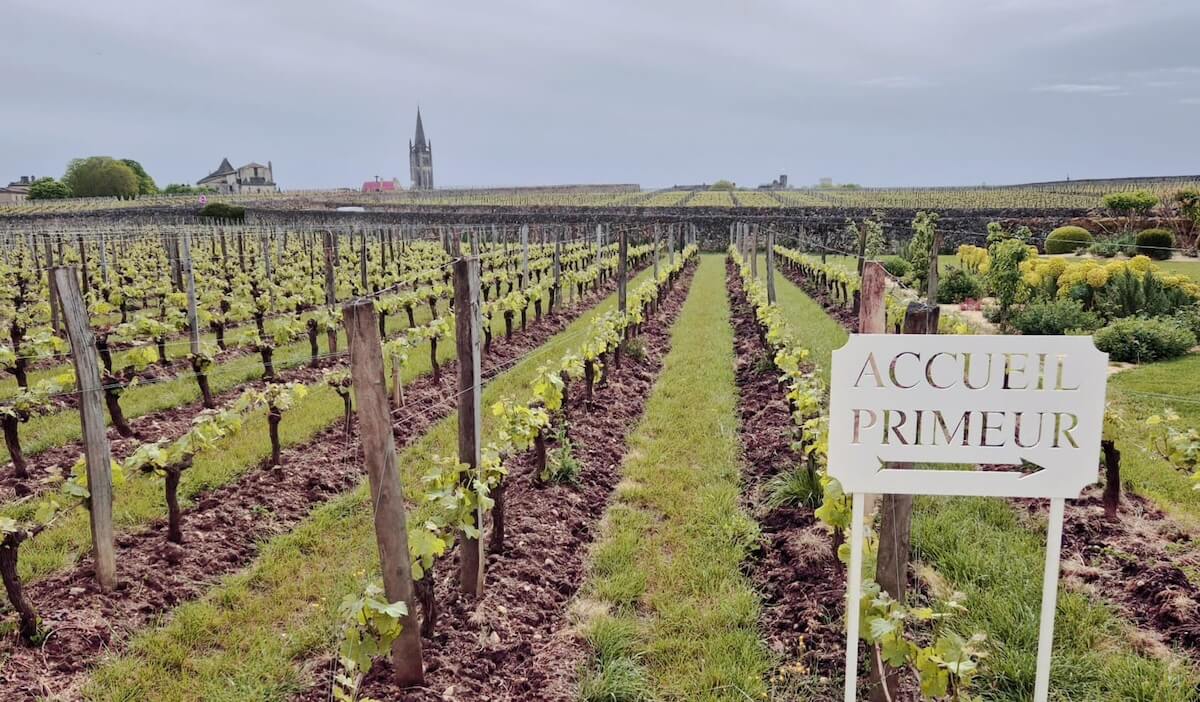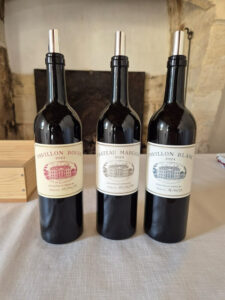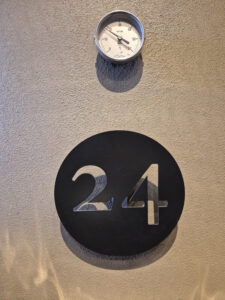If I had to summarise the 2024 Bordeaux wines in two words, it would be ‘Old School’.
First and foremost because it is a vintage which almost entirely re-enforced the Bordeaux status quo. We all know the weather was challenging, and the only ways to combat it were via enormous amounts of labour in the vineyards, as well as rigorous sorting in the winery. In short, to make 2024 a success, you had to be willing to throw money at the situation.
It is also old school because of the profile of these wines. You will frequently encounter alcohol levels in the 12s and, even those who were able to make a success of it, made lighter weight wines, reminiscent of the clarets of yesteryear.
 The Making of the 2024 Vintage
The Making of the 2024 Vintage
Key inflection points during great vintages are rare – you can just sit and watch your beautiful, healthy grapes grow. In 2024, they were made. Specifically, four keys things seemed to dictate success.
A Difficult Flowering
The first was during flowering, a process which usually takes 7-10 days. In some cases this year, it took as long as six weeks. This was due to continuous rain throughout the process, so it was essential to avoid uneven fruit set to be constantly applying treatments to your vines – Émeline from Grand Puy Lacoste related to us their sheer good fortune, that one of their vineyard team was so dedicated that he hung around for the May bank holiday and orchestrated spraying on the Saturday. This very ‘un-French’ holiday shirking she attributed almost entirely to making their year a success.
 Ripening Without the Rays
Ripening Without the Rays
If you were able to get through this, then your next challenge was to try and ripen your grapes. A rare piece of good news was that the rain almost entirely ceased in July/August (half average), allowing a break from fungal threat, but cloud cover remained pretty relentless. Cheval Blanc were the first to tell us how essential it was to practice leaf stripping on the ‘sunny side’ of your vines, to maximise the little sunlight they got and push the necessary intensity into the final wine.
Harvesting in the Rain
 Once this hurdle was surmounted (and you had paid the salaries of the teams necessary to conduct this long and back breaking task) the third challenge arrived with harvest, during which it rained almost continuously. It was essential here to hold one’s nerve, allow your grapes to hang for as long as possible, but also be able to keep them healthy/stop any rot or botrytis. Once again, this was easier for the wealthy, as they could constantly monitor the situation, apply their treatments when necessary and, critically, be willing to take the risk on losing volume. Château Margaux operate a team of ‘gardeners’ for their vineyards, in which each 2ha plot ‘belongs’ to a vineyard worker – frequently a piece of land they then work and get to know for decades. This sort of contingency allowing for constant, grape saving adjustments.
Once this hurdle was surmounted (and you had paid the salaries of the teams necessary to conduct this long and back breaking task) the third challenge arrived with harvest, during which it rained almost continuously. It was essential here to hold one’s nerve, allow your grapes to hang for as long as possible, but also be able to keep them healthy/stop any rot or botrytis. Once again, this was easier for the wealthy, as they could constantly monitor the situation, apply their treatments when necessary and, critically, be willing to take the risk on losing volume. Château Margaux operate a team of ‘gardeners’ for their vineyards, in which each 2ha plot ‘belongs’ to a vineyard worker – frequently a piece of land they then work and get to know for decades. This sort of contingency allowing for constant, grape saving adjustments.
Sorting in the Cellar Soil was also key – if you are on a hill, or have deep gravel beds, then the drainage could make the rain less impactful at harvest. Equally, clay gave a degree of defence, as it slowed the descent of any rain to the roots. The latter again necessitating expenditure, as in some cases it was necessary for vineyard teams to bring in crops over the course of three days, when they would usually take two weeks.
Sorting in the Cellar
 The fourth and final stage of this process was in the winery. The conditions of 2024 meant that almost every bunch had variability. One might look beautiful and ripe, but cut to the core and all the internal grapes are green. Your bunch might have half healthy grapes, half mouldy. Lots had millerandage or some coulure.
The fourth and final stage of this process was in the winery. The conditions of 2024 meant that almost every bunch had variability. One might look beautiful and ripe, but cut to the core and all the internal grapes are green. Your bunch might have half healthy grapes, half mouldy. Lots had millerandage or some coulure.
Whilst not a straight line, it was frequently necessary to dispose of 50% of your crop if you wanted to pick out the top quality grapes from the chaff. Obviously being wealthy helps here for starters, as you will be far more willing to sacrifice yield to maintain your standards, but it was also essential to have the machines in the winery to be able to make this happen – a vibrating sorting table was child’s play. The best were also equipped with an air sorter (to blow away the lighter, raisined grapes) a flotation sorter (which measures sugar density in the grapes, discarding any under ripe) and an optical sorter (which asses grape size and health using a laser).
Concentrating the Must
If you were able to cover all these bases, then your final move to make great wine would be to concentrate your must by either removing water (osmotically) or bleeding off some juice to increase the ratio of skins – a process which one Saint-Julien producer told us cost him 5,000 euros per tank, of which he had nearly 200. It is also a very interesting point of distinction between those who used osmosis to remove water (a process which is costly in the first instance, as you need the equipment, as well as lowering your final volume of wine) and those who chose to chaptalize. Both increased potential alcohol, but the latter added to your yield, the former reduced it.
What Does 2024 Bordeaux Taste Like?
So if you did all of these things and made a good wine, what did it taste like? The finest were able to bring all the elements of the harvest into balance and produce completes wines with incredible freshness and drive. As I mentioned before, these are unmistakably ‘Bordeaux’ in style, eschewing the ultra-dense, riper characters of recent warmer years.
Should you Buy? A Vintage to cherry-pick, not collect blindly
Should you buy them? If you like proper claret and you are selective, then yes – there are some real winners here, but there are also a good crop of losers, so it is not a ‘buy all’ vintage. Invariably, the petits Châteaux (unless they have grand owners, intent on raising their profiles) struggled to make anything exciting – the classifications shone through, making it clear why they were first established.
Pricing Outlook: A Market Awaiting Adjustment
I will mention the market in brief, as it is not important to everyone and I will be publishing something much more extensive for those who wish to take it into account. The Bordelais are very aware of the current situation and we have been told to expect appropriate adjustment. Rumours abound of first growths for £200 per bottle and Saint Emilion ‘Premier Grand Cru Classé As‘ for £100. It will inevitably come down to the bullishness of each Château, but if any of these come to pass, then there would be serious financial incentive to participate.
